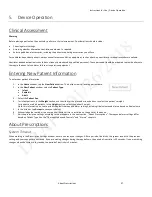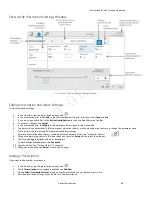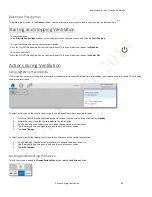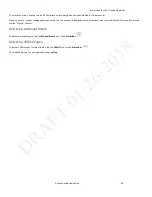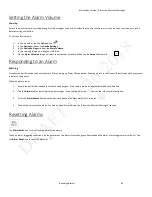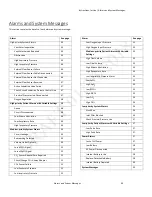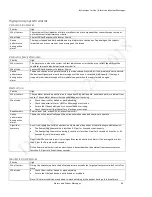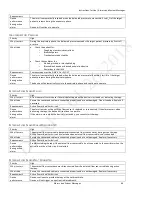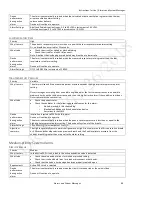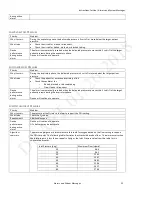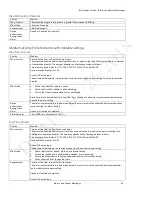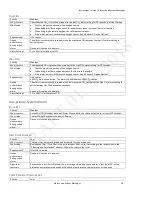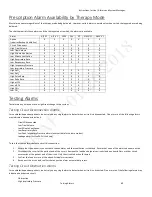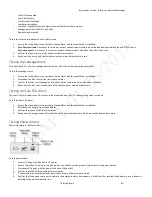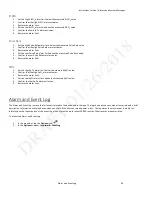
Instructions for Use | Alarms and System Messages
Alarms and System Messages
49
Device
performance
during active
alarm
The alarm is automatically resolved when the calculated minute ventilation is greater than the low
minute ventilation alarm setting.
volume under delivery
Device will continue to operate.
Alarm Settings
Adult and Pediatric patient types: 0.2 to 30 LPM in increments of 0.1 LPM.
Infant patient type: 0.2 to 10 LPM in increments of 0.1 LPM.
L
OW
R
ESPIRATORY
R
ATE
Priority
High
Why it occurs
The patient’s respiratory rate is less than or equal to the low respiratory rate alarm setting.
Or, no breath has occurred for 15 seconds.
What to do
•
Check the circuit for kinked or pinched tubing.
•
Check the circuit for a leak or disconnect.
Note: A patient that is sleeping or medicated may breathe at a lower rate.
Device
performance
during active
alarm
The alarm is automatically resolved when the measured respiratory rate is greater than the low
respiratory rate alarm setting.
Device will continue to operate.
Alarm Settings
Off, 1 to 80 BPM in increments of 1 BPM.
H
IGH
I
NSPIRATORY
P
RESSURE
Priority
Variable
Why it occurs
The alarm will sound if the measured patient pressure exceeds the high inspiratory pressure alarm
setting.
Occurs in stages, escalating from an audible single beep for the first two occurrences to an audible
medium priority on the third occurrence, and then to a high priority alarm if the condition continues.
Occurrences must be consecutive.
What to do
•
Check the patient status
•
Check the ventilator for the following potential causes for this alarm:
o
Kinked, pinched, or blocked tubing
o
Blocked leak device or blocked exhalation device
o
Secretions in the HME
Device
performance
during active
alarm
Inspiration is cycled to PEEP with this alarm
Device will continue to operate.
The alarm is automatically resolved when the peak inspiratory pressure is less than or equal to the
high inspiratory pressure alarm setting. The device will cycle out of the breath.
Alarm Settings
10 to 90 cmH
2
O in increments of 1 cmH
2
O.
Algorithm
summary
The High Inspiratory Pressure alarm shall generate a High Priority alarm on the 10
th
consecutive breath
or if 30 seconds has elapsed since a previous breath and the Peak Inspiratory pressure from the
current breath is greater than or equal to the alarm setting
Medium-priority System Alarms
C
IRCUIT
L
EAKAGE
Priority
Medium
Why it occurs
In the Active PAP circuit, a leak in the active exhalation valve is detected
What to do
•
Check the valve and both lines for kinked or pinched tubing.
•
Check the circuit and both lines for a leak or disconnect at both ends.
•
Check that the valve is not damaged and can properly seal and open.
Requirements
Active PAP circuit is selected
Device
performance
during active
alarm
The alarm is automatically resolved when the circuit is reconnected or the valve is fixed.
Device will continue to operate.



